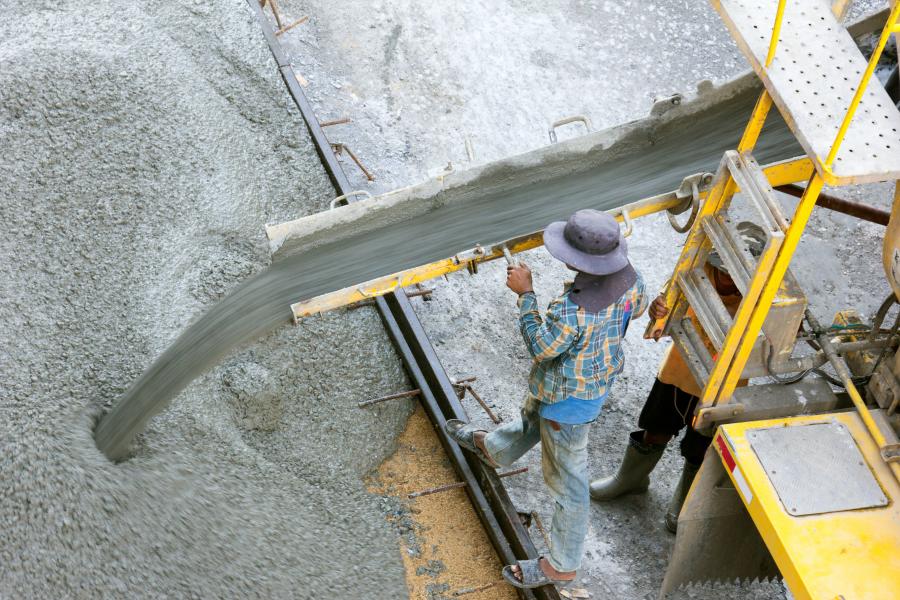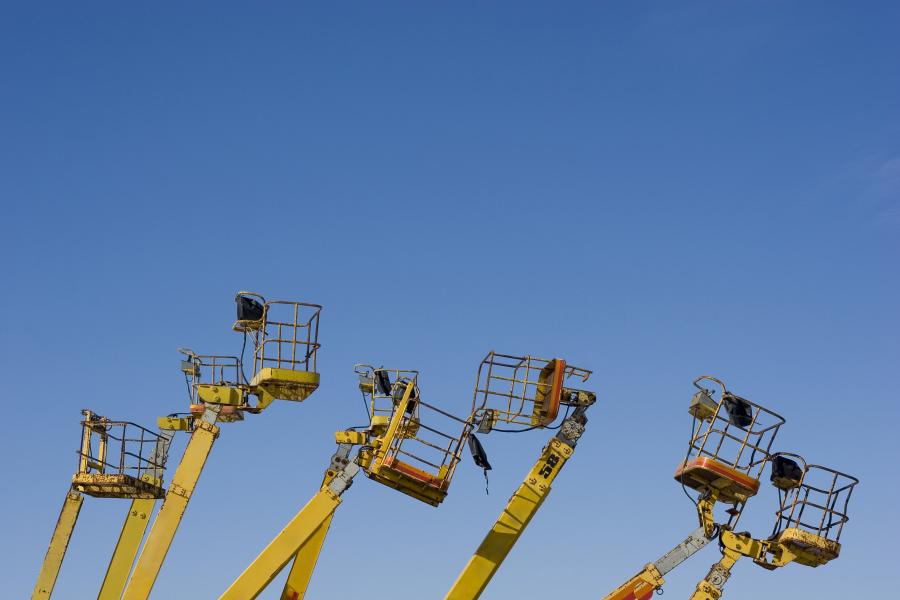Who does OSHA look to first when multiple contractors are at work on a job site where safety is called into question? If your company has any control over the work process, the agency's Multi-Employer Worksite Policy specifies that the responsibility likely falls on you. Have you done everything you could to prevent an accident?
OSHA uses the policy to assess responsibility on a construction site where there are likely many different companies at many different contract levels. The four employer categories are creating contractor, exposing contractor, fixing contractor and controlling contractor.
As the name implies, the creating contractor creates a hazard resulting in an incident or accident. The exposing contractor puts his or her employees in harm's way whether they created the hazard or not. The fixing contractor, who may or may not be the creating contractor, is responsible for fixing the safety violation. Finally, the controlling contractor holds contracts with and has authority over the contractors on site.
"An exception may come when a creating contractor has already demobilized from the site, and the correction of a hazard has been assigned to another entity," said John Braun, CEO of EHS consulting firm Signature Safety.
He gives as an example a steel erection company which has left the site with perimeter cables in poor condition but a concrete company has been contractually obligated to maintain the cables.
"The controlling contractor is the one that needs attention here," said Braun. "If they are not exerting enough control over their contractors, OSHA can and most likely will cite them for their inaction."
How much control is enough is certainly up for interpretation, he said.
"Control is one of the most hotly contested points of clarification I've seen in expert-witness cases."
What is the Multi-Employer Worksite Policy? Did the general contractor or construction manager perform enough inspections? Did they provide any training or, at the very least, ensure that proper training had been conducted? Did they clearly communicate expectations? Did they even do any prequalification of their contractors?
"Questions like these will be considered when determining how responsible the controlling contractor is. You need to be asking yourself if you are responsible, what can you do to ensure your contractors' safety is up to par," continued Braun.
While creating, exposing and correcting employers may have clear responsibilities to prevent hazards, the standards for controlling employers are more confusing, said Stan Liang, health and safety consultant of Tetra Tech.
"But controlling employers also carry a higher responsibility for compliance, so it's important to understand what a controlling employer's obligations are."
To determine whether a controlling employer is subject to citations under OSHA's MECP, it must be determined if the actions of the employer were enough to meet its obligations. OSHA expects controlling employers to exercise "reasonable care" to prevent hazards, including inspections of the work site, noted Liang.
"How often the employer should be inspecting the workplace is determined by many factors: the nature of the work being performed, the scale of the project, what the employer knows about the potential hazards and what the employer knows about the safety practices of the other employers at the site," he said.
"For example, if a subcontractor is known to have a history of frequent safety violations, it is expected that the controlling employer will perform more frequent worksite inspections."
Failing to exercise reasonable care to prevent safety violations could cause the controlling employer to receive an OSHA violation, even if they did not directly cause the hazard, he stressed.
Ask the Right Questions
When it comes to best practices, it matters not which category of responsibility you fall under on the job site. Regardless of whether you are the general contractor or a subcontractor, there are steps you can take to improve your safety program.
As Braun sees it, managing contractors is "exponentially more straightforward" if you hire contractors with a solid track record for safety. That starts at the prequalification stage.
Requiring a contractor's health and safety plan, OSHA logs and experience modification rate is a good approach to the prequalification process, said Braun.
"In addition, you can check OSHA's website to see if the contractor has incurred any fines and citations from OSHA."
Make sure this information is reviewed by someone who knows what to look for, he said, adding "not all incidents and citations are created equally." The reviewer should know the difference between a de minimus and a serious violation, should check the frequency and severity of a company's incident record in relation to its safety performance, for instance.
"In addition, if you know other companies who have used these contractors in the past, ask about them," said Braun.
Did they perform safely? How was management support for the safety program? Did the company seem to have a safety culture? Did they use well-kept equipment or old, beat-up stuff?
"Try to get a big-picture overview of the company rather than a one-off experience."
Next, make sure the contractors and subs you work with know what you expect from them. Even before work commences there are opportunities to spell it out, said Braun. Bid documents should make clear what you want how they expect to meet safety responsibilities.
This will give the subcontractor ample time to price necessary equipment and staff to perform work properly on your job, he added.
"Once you've decided to award the bid to a company, the contract should also include what you expect their safety responsibilities to be. This goes beyond just saying that they must meet OSHA requirements," said Braun.
Are there areas in the job site where going above and beyond OSHA will be necessary? Are there disciplinary policies that they need to know? What are the drug and alcohol screening requirements for the job?
"None of this should come as a surprise to your contractor," said Braun. "But if it does and you had it in the documents, then that's on them."
Finally, you should explicitly require all certification and training documentation relevant to the project. For instance, will they be operating aerial lifts? Get training records. Forklifts? Get their licenses. Working on excavation sites? Do they have excavation training?
"Also, have your contractor name — in writing — who their competent person will be and justify that designation by submitting that person's background to you," he said.
"To think that this information will then make it down to the boots on the ground is optimistic at best," he stressed. "Before the workers step foot on-site, you should ensure that they go through an orientation that clearly lays out what you expect of them."
According to Braun, that orientation should include safety requirements, disciplinary policies, drug and alcohol policies and everything else you addressed at the contract level relevant to the workforce.
"Don't hesitate to hang conspicuous signs that emphasize some more important points. If your orientation is a checklist or a speech delivered by a disinterested party, you're squandering an opportunity to set the tone for the project."
Never Assume Anything
Maintain some level of oversight. That's not to say you have to oversee contractors and subs every minute of every day, said Braun. Periodic observation of the job site is key, he believes.
Notify the contractor, in writing, of any violations and tell them when you expect them to be fixed, he suggested. Have them reply, in writing, when they are taking care of the issues and verify it.
Spot check who is operating equipment and match that up to the records you have on file. Are the contractors diligent about their people being qualified to do what they are being asked to do?
"The process of observing your contractors runs the length of the project," he said.
One final note from Braun: "Don't be an enabler."
A company that performs poorly from a safety perspective is bound to get somebody hurt or killed eventually, he said.
"If a contractor refuses to get on board, the worst thing you could do is reinforce their unsafe behavior by awarding them further work. Make it clear that putting their workers at risk is unacceptable, and you will have no part in it."
And remember, your primary goal is to keep everyone from getting hurt on your project.
"But if somebody does, you want to be confident that you have done everything you could to prevent it," he added.
If you are a controlling employer of a worksite, you will want to be careful about which subcontractors you hire, be intentional about the safety practices you enforce at your worksite and perform frequent inspections, concluded Liang.
"Making sure your safety program prevents workplace hazards to avoid OSHA citations can include many different actions including safety training, discussing safety with other site employers in advance and having a clear system for reporting hazards."
If you are a subcontractor at a site, make sure you meet all safety requirements and make reasonable efforts to prevent your employees from being exposed to hazards, stressed Liang.
"Even if they are not hazards you created, you will also want to make sure you do not create hazards for employees of other employers at the site." CEG
Lucy Perry
Lucy Perry has 30 years of experience covering the U.S. construction industry. She has served as Editor of paving and lifting magazines, and has created content for many national and international construction trade publications. A native of Baton Rouge, Louisiana, she has a Journalism degree from Louisiana State University, and is an avid fan of all LSU sports. She resides in Kansas City, Missouri, with her husband, who has turned her into a major fan of the NFL Kansas City Chiefs. When she's not chasing after Lucy, their dachshund, Lucy likes to create mixed-media art.
Read more from Lucy Perry here.
Today's top stories



















